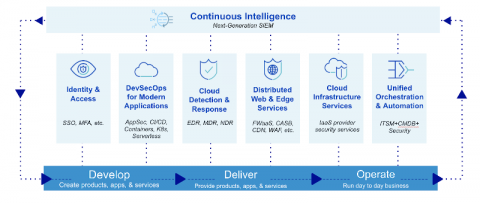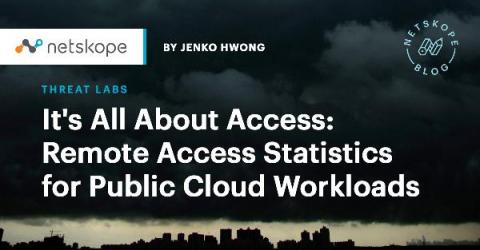Security | Threat Detection | Cyberattacks | DevSecOps | Compliance
Blog
It's All About Access: Remote Access Statistics for Public Cloud Workloads
“The more things change, the more they stay the same.“ In the recent Equinix breach in September 2020, 74 RDP servers were exposed to the Internet. Any publicly exposed ports are a risk but remote access protocols such as RDP have had their share of critical vulnerabilities (e.g., BlueKeep in 2019).
How Your Business Can Benefit From Card Issuing APIs
FinTech isn't new, but the reach of its usefulness continues to spread into unexpected areas. One such area is card issuing. Card issuing is the ability of financial institutions to issue debit or credit cards—either physical or virtual. This might not seem like much, but when combined with new business needs and consumer trends we start to see interesting use cases crop up.
The BSIMM: Five key steps to a better software security initiative
If you care about software security—and you should, since to be in business today means that no matter what you do or produce, you’re also a software company—you should be interested in the Building Security In Maturity Model (BSIMM). It can serve as a roadmap to better security.
Insider threats: What are they and how to prevent them
Companies need to establish a secure system to avoid insider threats and other online issues that could destroy a business. There are different online threats that businesses face every day. The most common of which is phishing attacks were the victim accidentally clicks on an unsafe link and log in. Other commonly known threats to businesses are malware, ransomware, weak passwords, and insider threats. Most of these online attacks are due to what is known as insider threats.
Veracode Makes DevSecOps a Seamless Experience With GitHub Code Scanning
Developers face a bevy of roadblocks in their race to meet tight deadlines, which means they often pull from risky open source libraries and prioritize security flaws on the fly. In a recent ESG survey report, Modern Application Development Security, we saw that 54% of organizations push vulnerable code just to meet critical deadlines, and while they plan for remediation on a later release, lingering flaws only add to risky security debt.
30 Ransomware Prevention Tips
Dealing with the aftermath of ransomware attacks is like Russian roulette. Submitting the ransom might seem like it’s the sole option for recovering locked data. But paying the ransom doesn’t mean that your organization will get its affected data back. Let’s not forget that ransomware also continues to evolve as a threat category.
Zerologon: Tripwire Industrial Visibility Threat Definition Update Released
Today, we released a Threat Definition Update bundle for our Tripwire Industrial Visibility solution to aid in the detection of Zerologon. Otherwise known as CVE-2020-1472, Zerologon made news in the summer of 2020 when it received a CVSSv3 score of 10—the most critical rating of severity. Zerologon is a vulnerability that affects the cryptographic authentication mechanism used by the Microsoft Windows Netlogon Remote Protocol (MS-NRPC), a core authentication component of Active Directory.
File Integrity Monitoring (FIM): Your Friendly Network Detective Control
Lateral movement is one of the most consequential types of network activity for which organizations need to be on the lookout. After arriving at the network, the attacker keeps ongoing access by essentially stirring through the compromised environment and obtaining increased privileges (known as “escalation of privileges”) using various tools and techniques. Attackers then use those privileges to move deeper into a network in search of treasured data and other value-based assets.
Gaining holistic visibility with Elastic Security
Let’s talk visibility for a moment. Security visibility is a data-at-scale problem. Searching, analyzing, and processing across all your relevant data at speed is critical to the success of your team’s ability to stop threats at scale. Elastic Security can help you drive holistic visibility for your security team, and operationalize that visibility to solve SIEM use cases, strengthen your threat hunting practice with machine learning and automated detection, and more.









